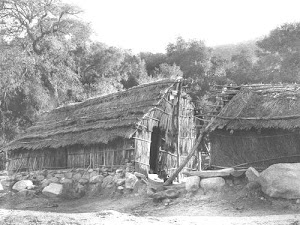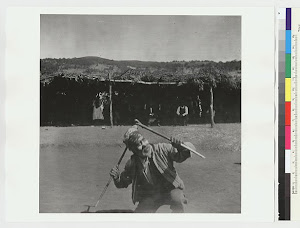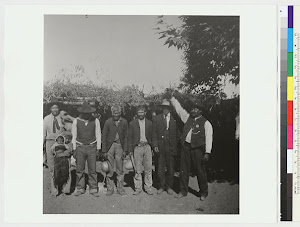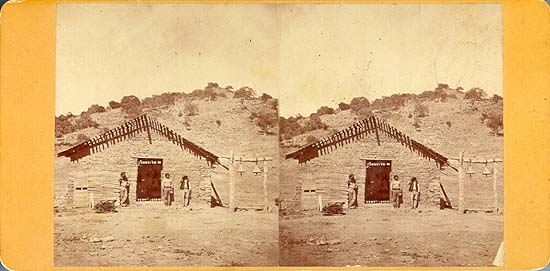WHY MUST THEY CONTINUE TO DISRESPECT THE ANCIENT ONES.. IT SEEMS THAT SOME PROFESSORS ARE TELLING US WHO AND WHO ISN'T OUR PEOPLE..
Professors sue to stop ancient bones transfer
Wednesday, April 25, 2012
(04-25) 10:46 PDT San Diego, CA (AP) --
Two skeletons that rested undisturbed on a San Diego cliff top for nearly 10,000 years are at the center of a modern court battle.
The University of California, San Diego, had intended to transfer the skeletons of a man and woman to an American Indian tribe for traditional burial. But lawsuits are complicating the plan.
The bones were discovered in 1976 during an excavation at University House, the traditional La Jolla home of the UC San Diego chancellor. The university was preparing to hand over the bones to the local Kumeyaay tribe when three UC professors filed a lawsuit Monday in Northern California to block the transfer.
Margaret Schoeninger of UC San Diego, Robert Bettinger of UC Davis and Timothy White of UC Berkeley argue that the bones are precious research objects and there is no evidence that they are Native American remains.
In a declaration, Schoeninger said the skeletons were not buried in a way consistent with ancient Kumeyaay practices and collagen taken from the bones indicated the two ate ocean fish and mammals different from that of the tribe."These are not Native Americans," said James McManis, a San Jose lawyer for the professors.
"We're sure where they're from," he told U-T San Diego (http://bit.ly/IgSIwF). "They had primarily a seafood diet, not the diet of any way of these tribes. They were a seafaring people. They could be traveling Irishmen who touched on the continent.
"The idea that we're going to turn this incredible treasure over to some local tribe because they think it's Grandma's bones is crazy."Respecting Native American preferences, the university has not permitted DNA testing of the bones, which are being kept at the San Diego Archaeological Center in Escondido.
In anticipation of the professors' suit, a dozen bands of Kumeyaay filed their own federal suit earlier this month, demanding transfer of the skeletons.
By law, Native American remains held by federal agencies or institutions receiving federal funds must be given to Native Americans. That includes unidentified remains found on aboriginal lands, said Dorothy Alther, an attorney for the Kumeyaay Cultural Repatriation Committee, which represents the 12 bands.
"A lot of the tribes were concerned that their ancestors were lying around in the basements of museums and not being properly interred," she said.
"What we're saying is that these are Native American remains," Alther said. "But even if someone says they are not, they were found on aboriginal lands. They go to the Kumeyaay."
The university is aware of the competing lawsuits, spokesman Jeff Gattas said in a statement.
"We believe the University process has achieved a decision that is in accordance with both the law and our commitment to the respectful handling of human remains and associated artifacts," he said.
___
Information from: U-T San Diego, www.utsandiego.com
Thursday, April 26, 2012
WHEN CAN OUR PEOPLE GET RESPECT
Posted by
Karen Vigneault Librarian
at
1:59 PM
0
comments
![]()
Monday, April 23, 2012
DALAI LAMA
His Holiness speaks on upholding universal ethics and compassion San Diego, California, USA, 10 April 2012 - On his final full day in San Diego during this visit, on April 19th His Holiness the Dalai Lama continued with his theme of compassion without borders and spoke to a sold out crowd of 13,000 people at the San Diego State University on upholding universal ethics and compassion. He also participated in a discussion on neuroscience and the emerging mind with scientists. In the morning, His Holiness visited the Viejas Arena of San Diego State University and gave an interview to Maureen Cavanaugh of KPBS, the San Diego affiliate of Public Broadcasting Service. He responded to questions relating to compassion in the American society and on his devolution of political authority. This is being broadcast later in the day. San Diego Mayor Jerry Sanders presents His Holiness the Dalai Lama with the Key to the City in San Diego on April 19, 2012. Photo/Tim Mantoani Thereafter, His Holiness entered the stage of the arena to a thunderous welcome from the people. Dr. Elliot Hirshman, President of San Diego State University, welcomed His Holiness to the event. Thereafter, San Diego Mayor Jerry Sanders presented His Holiness with the Key to the City. In a brief remark, the Mayor said, “Throughout his teachings, His Holiness encourages all of us to strive for a better future, through peace and compassion for others. With this key, we offer His Holiness a promise to keep working for a brighter tomorrow." The Mayor said that His Holiness’ message of compassion and peace resonates with the citizens of his city. Ms. Lauren Powell Jobs, in her introduction of His Holiness, said his message was that altruism to our spiritual wellbeing is a civic responsibility. She termed His Holiness a religious leader who includes and not excludes. She applauded the approach of His Holiness and the Tibetan people even in the face of “terrible experience of oppression that continues even to this day.” His Holiness then began his talk on “Upholding Universal Ethics and Compassion in Challenging Times” His Holiness said he usually began by calling everyone brothers and sisters, through which he wanted to indicate that we are truly the same human being. He said we have the same potential for construction and destruction. He said fear, jealousy, anger, frustrations, etc. ultimately bring destructive action, both physical and verbal. His Holiness the Dalai Lama adjusts his San Diego State University visor during his talk at the University on April 19, 2012. Photo/Tom Mantoani His Holiness said the seed of compassion was in each and every individual. He said even animals like cats, dogs and birds respond to affections shown to them. He added that kittens and puppies could respond these form of biological compassion. He talked about newborn puppies whose eyes may not be opened but nevertheless looks for the nipples of their mother and feel happy once they find them and start consuming the milk. He said turtles might be an exception as the mothers don’t care for the eggs once they are hatched. With alligators, His Holiness said that he had noticed that the mother would watch from a distance as her egg hatches. These show that compassion was needed when life begins, he said, adding that compassion was essential even at the time life ends. He said showing of closeness feeling at the time of a person’s death will ease the process for the person and that money, power , fame, etc. are of no use at that stage. His Holiness said from his own experience he knows that an affectionate feeling shown by others has a positive feeling in oneself. He talked about his experience with doctors saying some doctors merely seem to treat patients without much of a personal feeling. At such time, he said he gets the feeling that the doctor may merely be performing an experiment on him. His Holiness suggested generating a feeling of oneness and recalled a chant that he had heard in Hawaii recently, the meaning of which was explained to him as being. “Your bone is my bone, your blood is my blood.” He said this was very meaningful and said that we need to have the feeling that “your life is my life, your health is my health.” He added that such an attitude was very useful. Explaining that compassion was something that needed to be cultivated by oneself, His Holiness talked about his growing awareness of western societies since his first travel to Europe in 1973. He said Tibetans had the impression that Europe was highly developed. In fact, those Tibetans who settled in Switzerland in the early 1960s expressed that the country was indeed paradise. But through his subsequent travels to Europe, the United States, Canada, etc., he became aware of another reality that was beneath the beautiful surface. He learnt about problems of stress, alcohol, drugs, etc. His Holiness said the situation in these countries clearly indicated that material development alone cannot bring about inner peace. He added that physical comfort couldn’t subdue mental affliction. On the other hand, if one is mentally calm, this can subdue any physical pain. Some members of the packed Viejas Arena of San Diego State University listening to His Holiness the Dalai Lama speaking in San Diego on April 19, 2012. Photo/Tom Mantoani His Holiness also talked about the situation of gap between the rich and the poor throughout the world. He said during his visits to Africa and Latin America, he could see this condition. He said one of the issues affecting the world is corruption, which he said is the new cancer. He said these problems come about because of a lack of self-discipline and training in moral ethics. Although there are people who say that moral ethics should be based on religion, His Holiness said such a situation would have limited effect as no one religion can claim universal acceptance. Since the problem, is universal, he said that we need to look for a universal solution. His suggestion was to look for an approach that is not grounded in religion. He said this was not a new idea as it has been a part of ancient Indian thoughts. He talked about the secularism that was promoted by India and that this did not mean being against religion. He said that children interact with each other without any thoughts of their respective background or social conditions. But as one grows up one begins to be taught about backgrounds and the earlier feeling of oneness becomes dormant. Instead different feelings grow. He talked about the importance for people to make a distinction between these feelings. Competition in the sense of wanting to excel and to be at the top was good, but extreme competition that makes one desire worse outcome for others while wanting good for oneself was negative. Similarly, if one had extreme self-centered ego that disregarded other’s feelings it was negative while a sense of strong self in order to serve other people with infinite altruism is positive. He said the feeling of desire that is mixed with attachment was destructive and shortsighted. Also, anger that comes out of a sense of concern for the wellbeing of others was positive while anger born out of ill feeling was negative. San Diego State University's Viejas Arena, venue for His Holiness the Dalai Lama's talk in San Diego on April 19, 2012. Photo/Tom Mantoani His Holiness said people could understand the importance of the need to promote compassion through common experience, use of their common sense and through scientific findings about the connection between a healthy body and a healthy mind. He said calm mind could only be developed through warm heartedness. His Holiness talked about the importance of training the mind in this and to remove grounds for fear. Some fear, he said, would be valid and gave the example of people living in Dharamsala being afraid of earthquake as it is in the earthquake zone. Under such a situation the fear leads people to take precaution, he said. His Holiness also talked about his visits to China and India in the 1950s and being nervous then while meeting the leaders in these countries. However, subsequently through increased familiarity as well as through training he was able to overcome the nervousness, he said. His Holiness said his tradition of dedicating his body, speech and action to the wellbeing of others every morning was helpful in transforming his mental state. His Holiness said we needed to go away from the old concept of differentiating between me and others or we and they. Instead we need to think of a concept of Big We, with the entire seven billion people of the world being part of that. His Holiness then answered some questions. When asked how could an individual make a difference in this world, His Holiness said change occurs because of the combination of effort by individuals. We need to think along these lines and to know that an individual’s effort can multiply. He said Jesus, Buddha and Mahavira, etc. were all individuals, who were able to make a difference. His Holiness the Dalai Lama answering a question from the audience during his talk at San Diego State University on April 19, 2012. Photo/Tom Mantoani A questioner asked about the most important thing to achieve in life. His Holiness responded by saying that in terms of the humanity in general, it would be a peaceful life. At the individual level, he said that those believing in theistic religion would want to go to heaven. Since he is a Buddhist, His Holiness said many Tibetans would like to achieve Buddhahood in three years, which is unrealistic. But he said he was realistic and was striving to achieve the same in eons. Asked about the biggest inspirations in his life, His Holiness said since he is a Buddhist he may be prejudiced, but the Buddha is his inspiration. In modern times, he said Mahatma Gandhi is his inspiration adding that he had not met Gandhi, except in a dream. He added that he also admired Vaclav Havel, Mother Teresa, and Thomas Merton. At the end His Holiness stressed on the people gathered to strive to cultivate warm-heartedness and a sense of global responsibility. He said those people below 30 years or so have the opportunity to make the 21st century a better century. Thereafter, as per the tradition established by His Holiness with events connected with him, the organizers made a financial statement. He said no public fund was used to bear the expenses connected with the visit. The total income as of April 17, 2012 from the events was $ 574,000 and the expenses to date were $527,000. The organizing committee’s representative made it clear that His Holiness the 14th Dalai Lama does not charge a speaking engagement fee and no aspect of His Holiness' visit is being used to profit financially. He added that any funds raised through sponsorships and tickets sales will be used only to cover expenses for the events. Any surplus fund from the events will be disbursed to national and international charitable organizations. The organizers presented Ven. Tenzin Dhonden, Chair of the Organizing Committee, with a citation appreciating his contribution. Members of the Native American Kumeyaay tribe perform traditional song and dance for His Holiness the Dalai Lama in San Diego on April 19, 2012. Photo/Tom Mantoani Following lunch, His Holiness met a group of people from the Kumeyaay tribe of Native American people. They performed some songs and dances to welcome His Holiness in their tradition. They also expressed their understanding of and support for the Tibetan people based on their own experience with their homeland in the United States. His Holiness advised them on the importance of getting good modern education and at the same time preserving their culture and language. He suggested that they think of devising a written script to promote and preserve their culture and language. He also said people could learn from the Māori people of New Zealand as they are the most advanced among indigenous people.
Posted by
Karen Vigneault Librarian
at
7:32 AM
0
comments
![]()
Friday, April 20, 2012
University of California, Riverside will commit $210,000
RIVERSIDE — The University of California, Riverside will commit $210,000 across the next three years for programs geared toward encouraging and assisting Native American youth seeking a college education, it was announced Wednesday.
UCR Chancellor Timothy White told 50 or so attendees at the campus's Native American Educational Summit on Tuesday that he would be willing to dedicate funds to support a “stay-in-the-game” effort that contributes to higher college attendance by students from regional tribes.
The money would not be drawn from state appropriations, but instead come from the university's pool of discretionary funds, according to campus officials.
“This will make a difference. If everyone (at the summit) participates, it will be successful,” said Cahuilla tribal member and UCR graduate Mike Madrigal.
He agreed with White's observation that because young Native American adults lack a support network away from the reservation, they're often reluctant to move ahead with advancing their academic achievements.
Tribal leaders should put more emphasis on outreach, offering new avenues for youngsters interested in a post-secondary education, according to White.
“The chancellor has involved the American Indian community in an engaging way,” said Clifford Trafzer, UCR professor of Indian American affairs. “He has provided us with the resources to touch the lives of children, parents and tribes interested in furthering American Indian education.”
The summit led to plans for the Inter-Tribal Education Collaborative to establish a website that profiles the higher education options available to Native American students, according to UCR.
Posted by
Karen Vigneault Librarian
at
11:15 AM
0
comments
![]()
Tuesday, April 17, 2012
Agent Orange in our food..please sign petition
Next week, the USDA will decide whether to allow Monsanto and Dow to introduce one half of the chemical mixture Agent Orange into our food supply. Widescale use of Roundup has led to a new generation of resistant weeds, and the next step in the pesticide arms race is 2,4-D -- a chemical linked to cancer, Parkinson's and reproductive problems.
Farmers that sign up to use genetically-engineered 2,4-D-resistant corn will be required to spray down their fields with both 2,4-D and Roundup, double-dosing our food, our soil and our waterways with the toxins. Some experts estimate this will increase the use of 2,4-D 50-fold, even though the EPA says the chemical is already our seventh-largest source of dioxins -- nasty, highly toxic chemicals that bioaccumulate as they move up the food chain and cause cancer, developmental damage, and birth defects.
We can stop this. The use of 2,4-D is banned entirely in parts of Canada and Europe, and right now the US Department of Agriculture is accepting public comments on 2,4-D to decide whether or not to approve the widespread industrial use of the toxin.
Add your name to our letter to the USDA urging them to deny approval for Dow's 2,4-D-resistant GMO corn.
This is part of a growing problem, an escalating herbicide war going on across America’s heartland. From 1996 to 2008, herbicide usage increased by 383 million pounds. Nearly half of this took place between 2007 and 2008 after the introduction of another strain of herbicide-resistant plant pushed by Dow. Like Roundup before it, 2,4-D is only a temporary solution that will require more and more tons of toxins and more and more potent chemicals leaching into our food supply.
2,4-D is nasty stuff and has been linked to a number of health problems, such as tripling the rates of non-Hodgkins lymphoma in Nebraska farmworkers exposed to it and causing reproductive problems -- birth defects and high rates of miscarriage -- in both mice and men exposed to it in the lab and field.
Tell the USDA - we don’t want Monsanto’s toxic pesticide.
http://sumofus.org/campaigns/24-d/?akid=374.565053.VFEbra&rd=1&sub=fwd&t=2
-Kaytee, Claiborne Taren and the rest of the team
Posted by
Karen Vigneault Librarian
at
9:59 AM
0
comments
![]()
Monday, April 16, 2012
Disrespect for Womens coming of age ceremony in California
Winnemem Tribe Demands Forest Service Respects Native Women's Rights P R E S S R E L E A S E* **Winnemem Wintu Tribe** ** **For Immediate Release: April 16, 2012** * *For more information:*Caleen Sisk, Tribal Chief: 530-710-4817James Ward, media relations: 530-638-5580 *WINNEMEM TRIBE DEMANDS FOREST SERVICE RESPECT**NATIVE WOMEN’S RIGHTS** **• Agency Refuses to Provide Closure of McCloud River Necessary for Girls’Traditional Coming of Age Ceremony**• Winnemem Women and Chief Demand Face-to-Face Meeting With RegionalForester at Vallejo Headquarters** • Winnemem Men and Supporters Picket with Signs** ** **EDITORS NOTE*: Tribal leaders will address the press directly at 11 am onthe front steps of the U.S. Forest Service office located at 1323 ClubDrive, Vallejo, CA 94592 *Vallejo, CA* – Today members of the Winnemem Wintu Tribe *willchallenge *U.S.F.S.Regional Forester Randy Moore at his Vallejo office on the issue ofprotecting Indigenous Women from racial slurs and physical harm duringtheir coming of age ceremonies. The Tribe is demanding that the *Shasta-TrinityNational Forest* provide a* four*-day *mandatory* closure of a quarter milestretch of the McCloud River during a coming of age ceremony for a teenagegirl, which is planned for late June. The Tribe's past two Coming of AgeCeremonies have been disrupted by racial slurs, alcohol use, and indecentexposure from passersby in motorboats who refused to honor a voluntaryclosure. These boaters also endanger the physical safety of young tribalmembers who swim across the river as part of the ceremony. Winnemem tribal members and their supporters will picket the Forest Serviceoffice while tribal women seek a face-to-face audience with the RegionalForester*. Tribal members will form picket Line at 9 a.m. Winnemem TribalChief and Spiritual Leader Caleen Sisk will hold a press conference at 11am to discuss the Tribe’s demands and the outcome of the meeting with Mr.Moore.* “Since 1941 most of our ceremonial sites have been *buried* beneath thestill waters of Lake Shasta,” according to Chief Sisk. “We ask that theForest Service grant us this one small dignity by allowing our girls toenter womanhood in privacy at one of our last remaining traditionalceremonial sites.” The Tribe has requested for the past several years that the Forest Serviceclose this stretch of river during their Coming of Age Ceremonies, which isheld in an area accessible on Lake Shasta by boat. Although the ForestService has issued “voluntary closures,” which discourage most boaters fromentering the area, several times during each ceremony groups of individualspowered into the ceremonial area, often with beers in hand and musicblaring as they verbally insulted members of the Tribe. During a Coming ofAge Ceremony in 2006, an individual “flashed” the ceremonial participantswith naked breasts and yelled racist insults. “If someone did this during Mass, they would be arrested,” says Sisk, whonotes that there were no authorities present to cite the individual forpublic indecency. A mandatory closure was issued later at this sameceremony by the Shasta County Sheriff after a Forest Service DistrictRanger's kayak was rammed by a boat. For the Winnemem Wintu Tribe, this is about respecting and protectingNative women while they pass on traditional ways to the next generations.According to Sisk, “Like many traditional people, we hold our women in highregard. This beautiful ceremony is vital to our girls' transitioning towomanhood with confidence, grace and knowledge. We must hold this ceremonyfor our tribe to survive." *# # #* Learn more about the Winnemem Wintu at http://www.winnememwintu.us/ Learn more about the ceremony at http://www.saveourceremony.com Download Video of motorboats speeding past ceremony and flashing theparticipants at: http://vimeo.com/39867112
Posted by
Karen Vigneault Librarian
at
12:28 PM
0
comments
![]()












